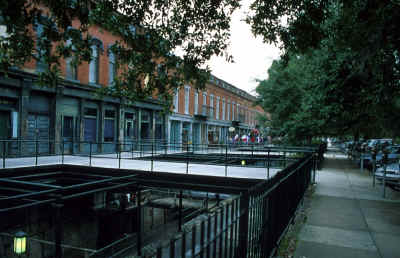
Direct and Indirect Benefits
[ Up ] [ Next ]
|
Maximum benefits accrue when roofing, paving, and tree planting are
used to work together as a system to reduce ambient temperature,
but there are also individual and ancillary benefits to each action:
|

|
- Lighter colored roofing with proper
insulation is cooler and lasts longer than a standard flat, dark
roof, and it reduces the energy costs associated with air
conditioning. Reduced air conditioning also reduces electric power
generation and associated emissions.
|
- Lighter colored pervious paving in
parking surfaces was originally developed to reduce stormwater
runoff, but other water related benefits include cooler temperatures
of runoff water to streams, less land required for retention basins,
and reduced flooding and loading to sewage treatment plants. Lighter
color parking lots also require less light to illuminate at night,
and because they are cooler, there are fewer evaporative emissions
from cars parked on the lot. Porous paving does not absorb or store
heat efficiently and also promotes more vigorous tree growth because
of more available water.
|
- Trees provide multiple direct and
indirect benefits to the urban environment. In addition to aesthetic
enhancement, trees provide carbon dioxide reduction, shade to cool
surfaces and buildings (thus helping reduce air conditioning
requirements), cooling the air through evapotranspiration, carbon
sequestration benefits, filtration of particulate matter, erosion
control, and significant reduction of stormwater runoff.
|
|

